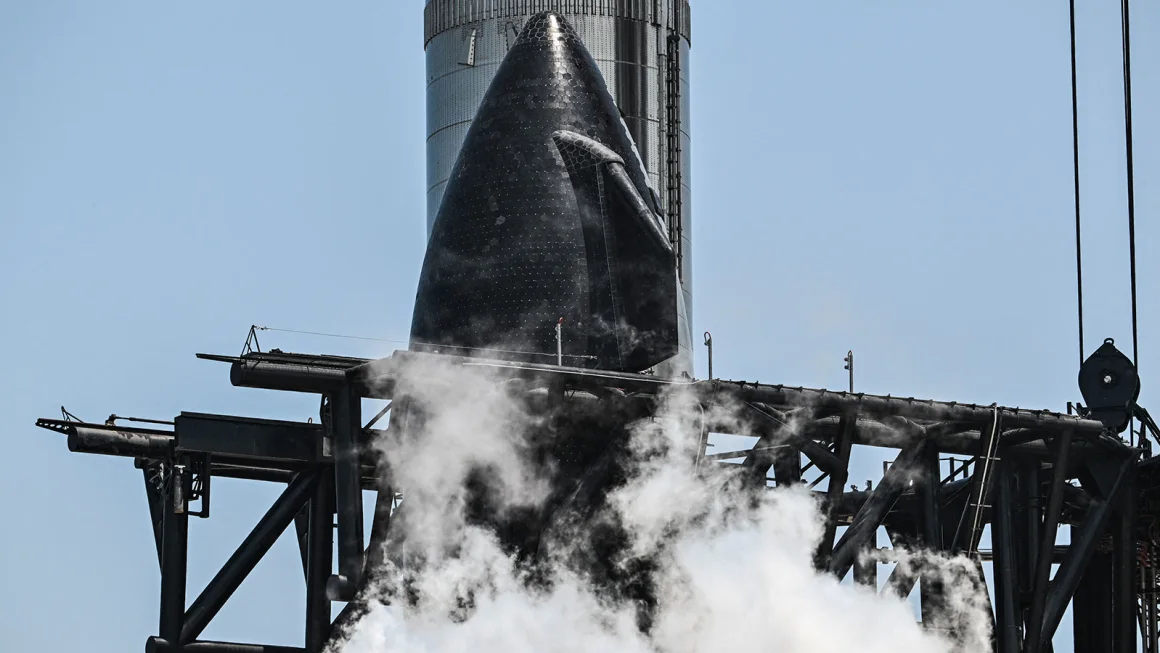(CNN) — SpaceX has obtained a launch license allowing the fourth test flight of its massive lunar rocket, Starship.
When is it and at what time?
Starship, the most powerful launch vehicle ever, is expected to lift off on Thursday, during a 120-minute launch window beginning at 8 a.m. ET.
Here we leave you time for other places in the world:
- Mexico City, Mexico: 6 a.m.
- Bogotá, Colombia: 7 am.
- Buenos Aires, Argentina: 9 am.
Where do you see?
A live broadcast of the flight test will be available on SpaceX website About 30 minutes before take off.
The vehicle includes a Starship spacecraft on top and a rocket booster known as the Super Heavy. It will launch from the company’s Starbase facility in Boca Chica, Texas.
The Federal Aviation Administration, which licenses commercial rocket launches, gave SpaceX approval for the flight test on Tuesday and said the company “met all safety and other licensing requirements for this rocket flight.”

The SpaceX spacecraft is seen at Starbase in Boca Chica, Texas, on June 4 ahead of its fourth flight test. Photograph: Chandan Khanna/AFP/Getty Images
what are you looking for
SpaceX proposed three scenarios related to Starship’s entry into the atmosphere, which would not require an investigation if the vehicle was lost, according to the agency. These potential setbacks include heat shield failure, loss of some control of the vehicle mid-flight, and engine failure during landing.
“If a different anomaly occurred on the Starship vehicle, an investigation may be warranted, just as if an anomaly occurred on the super-heavy rocket’s booster,” the agency said in a statement.
“In addition, the FAA has approved a mission profile that includes both controlled and uncontrolled entry for the Starship vehicle,” the statement read. “If SpaceX decides to perform an uncontrolled entry, it must communicate that decision to the FAA before “Launch.” “As such, the loss of the Starship would be considered a planned event and no investigation would be required.”
Each Starship test flight has different objectives based on lessons learned and milestones achieved during previous flights.
This time, SpaceX will focus on “demonstrating the ability to return and reuse Starship and Super Heavy.” The main objectives will be to perform a soft landing and landing in the Gulf of Mexico using the Super Heavy booster and achieve a controlled entry for the Starship, according to a statement shared by the company.
If successful, the spacecraft is expected to land in the Indian Ocean.
SpaceX has made several software and hardware upgrades to the spacecraft to incorporate lessons learned from the third flight.
“The fourth Starship flight will aim to bring us closer to the rapidly reusable future on the horizon,” according to SpaceX. “We are continuing to develop Starship, putting the flight hardware into the flight environment to learn as quickly as possible while building a fully reusable transportation system designed to transport crew and cargo to Earth orbit, the Moon, Mars and beyond.”
Three previous test flights
The first two attempts to get the spacecraft up to orbital speeds in 2023 ended in explosions, with the spacecraft and booster exploding before reaching their intended landing sites.
SpaceX is known to accept major setbacks in the early stages of spacecraft development, and says these failures help the company quickly implement design changes that lead to better results.
SpaceX has said its approach to rocket development is geared toward speed. The company uses an engineering method called “rapid spiral evolution.” Essentially, this process boils down to wanting to build prototypes quickly and flying them voluntarily to learn how to build a better model, faster than if the company relied solely on ground tests and simulations.
After Starship’s first and second test flights, the company immediately tried to frame these setbacks as successes.
The third, nearly hour-long test flight, conducted in March, achieved several milestones before crashing on reentry, rather than landing in the Indian Ocean.
A lot depends on the ultimate success of Starship. SpaceX CEO Elon Musk has repeatedly described the rocket as critical to the company’s founding mission: transporting humans to Mars for the first time.
More importantly, the Starship spacecraft is also the vehicle chosen by NASA to transport astronauts launched from the United States to the Moon for the first time in more than five decades as part of the Artemis program. The space agency is locked in a race with China, competing to become the first to develop a permanent outpost on the moon, setting a precedent for settlements in deep space.

“Proud web fanatic. Subtly charming twitter geek. Reader. Internet trailblazer. Music buff.”






More Stories
The final moments of the “Halloween Comet” were captured by the SOHO spacecraft
University of Michigan scientists have discovered what’s inside a black hole
NASA shares the scariest images of the sun in the lead-up to Halloween